
The Pristine Beauty of the Parang Mountains
Discover the Parang Mountains in Romania – a haven for hikers, nature lovers, and culture enthusiasts, boasting pristine landscapes, diverse wildlife, and charming villages.
Nestled in the heart of Romania, the Parang Mountains offer an untouched escape into nature's wonderland. These mountains are part of the Southern Carpathians, known for their breathtaking landscapes, serene lakes, and rich biodiversity. Whether you're an avid hiker or a nature enthusiast, the Parang Mountains promise an unforgettable adventure. With peaks reaching up to 2,519 meters, the Parang Mountains provide thrilling hiking trails that cater to both beginners and experienced climbers. One of the most popular trails is the route to Parangul Mare, the highest peak in the range. This trail offers panoramic views that are sure to leave you in awe. Besides hiking, the mountains are perfect for wildlife spotting, with chances to see deer, chamois, and even the elusive lynx. The Parang Mountains are not just about high-altitude excitement. The lower slopes are dotted with charming villages where you can experience authentic Romanian culture. Here, you can enjoy traditional cuisine, warm hospitality, and unique crafts. Don't miss the opportunity to visit the Transalpina, one of the highest roads in Romania, which winds through the Parang Mountains, offering stunning vistas at every turn.
Local tips in Parang Mountains
- Visit in late spring or early autumn to avoid the summer crowds and enjoy mild weather.
- Pack layers of clothing; the weather can change rapidly in the mountains.
- Hire a local guide for the best hiking experience and to learn more about the local flora and fauna.
- Try local dishes like 'bulz' (polenta with cheese) and 'placinta' (traditional pie) for an authentic culinary experience.
- If driving on the Transalpina, check weather conditions in advance as the road can be closed due to snow even in early summer.
The Pristine Beauty of the Parang Mountains
Nestled in the heart of Romania, the Parang Mountains offer an untouched escape into nature's wonderland. These mountains are part of the Southern Carpathians, known for their breathtaking landscapes, serene lakes, and rich biodiversity. Whether you're an avid hiker or a nature enthusiast, the Parang Mountains promise an unforgettable adventure. With peaks reaching up to 2,519 meters, the Parang Mountains provide thrilling hiking trails that cater to both beginners and experienced climbers. One of the most popular trails is the route to Parangul Mare, the highest peak in the range. This trail offers panoramic views that are sure to leave you in awe. Besides hiking, the mountains are perfect for wildlife spotting, with chances to see deer, chamois, and even the elusive lynx. The Parang Mountains are not just about high-altitude excitement. The lower slopes are dotted with charming villages where you can experience authentic Romanian culture. Here, you can enjoy traditional cuisine, warm hospitality, and unique crafts. Don't miss the opportunity to visit the Transalpina, one of the highest roads in Romania, which winds through the Parang Mountains, offering stunning vistas at every turn.
When is the best time to go to Parang Mountains?
Iconic landmarks you can’t miss
Bolii Cave
Explore the breathtaking beauty of Bolii Cave, a stunning natural attraction near Petroșani, Romania, renowned for its captivating stalactite formations.
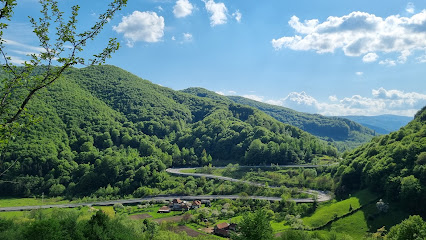
Pădurea Colorată
Discover the vibrant beauty of Pădurea Colorată, a natural masterpiece in Romania that captivates with its stunning colors and serene landscapes.
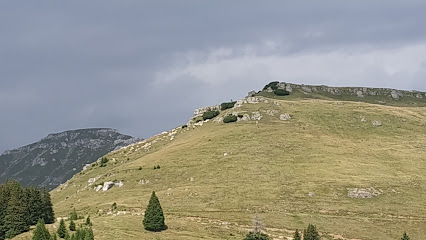
Stațiunea Parâng
Experience the excitement of skiing and the beauty of nature at Stațiunea Pârâng, your ultimate winter getaway in Romania.
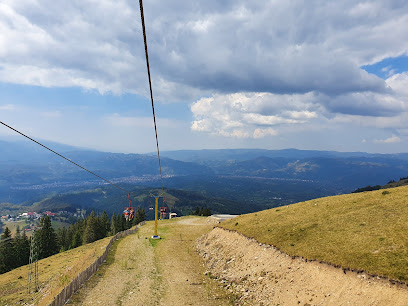
Masivul Parâng
Explore the breathtaking heights of Masivul Parâng, a mountain peak in Romania, offering stunning landscapes and diverse hiking trails for all adventurers.
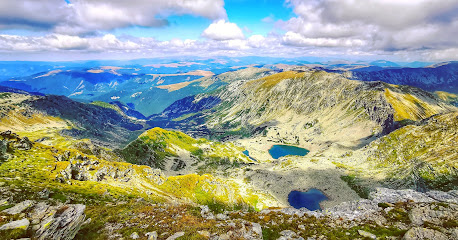
Transalpina
Discover Transalpina, Romania's highest road, where stunning mountain views and thrilling adventures await in the heart of the Carpathians.
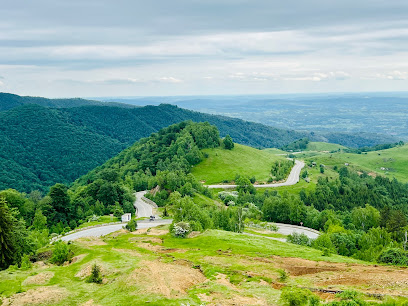
The Parângul Mic peak 2074m
Discover the breathtaking beauty of Parângul Mic Peak, a premier hiking destination in Romania's Carpathian Mountains, perfect for outdoor enthusiasts.
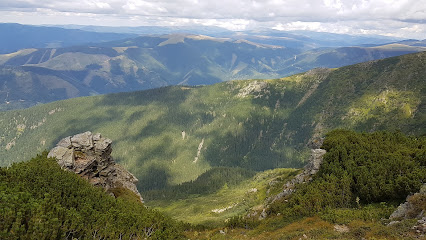
Parâng Mountains
Explore the stunning Parâng Mountains, Romania's majestic range offering adventure, tranquility, and breathtaking natural beauty.
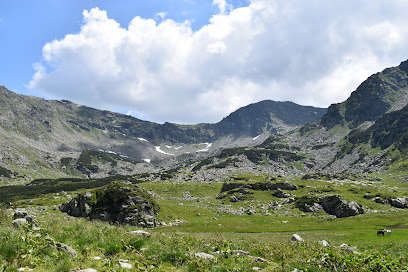
Curmătura Olteţului
Explore the breathtaking landscapes and rich cultural heritage of Curmătura Oltețului, a must-visit destination for nature and adventure lovers in Romania.

Parângu Mare
Explore the breathtaking heights of Parângu Mare, one of Romania's highest peaks, where adventure and stunning views await every traveler.
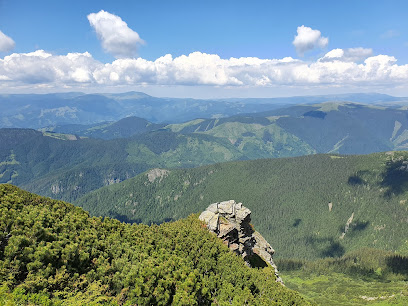
Waterfall shower Ranger
Explore the enchanting Waterfall Shower Ranger in Jieț, Romania, where nature meets tranquility in a breathtaking waterfall experience.
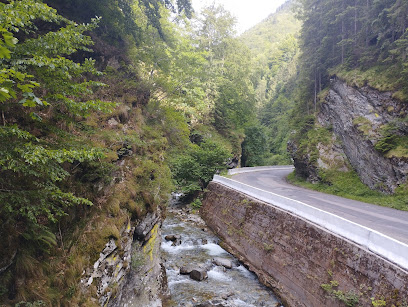
Refugiul Agăţat
Discover tranquility and adventure at Refugiul Agățat, your perfect indoor lodging in the enchanting Parâng Mountains of Romania.
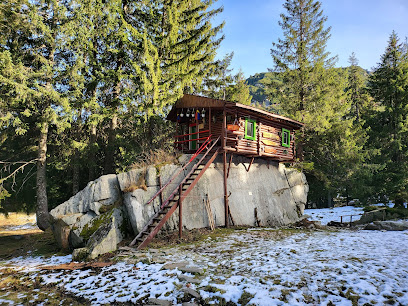
Cheile Jietului
Explore the breathtaking Cheile Jietului, a hiker's paradise in Romania, with stunning landscapes and thrilling outdoor adventures.
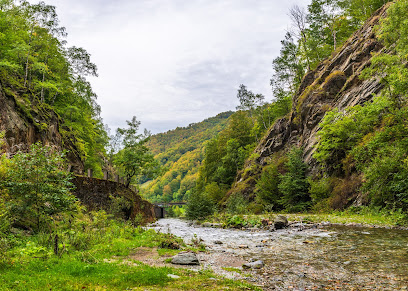
Vârful Cârja, Munții Parâng
Experience the breathtaking views and exhilarating hikes at Vârful Cârja, a stunning peak in Romania's Parâng Mountains.

Păpușa Peak
Discover the breathtaking beauty of Păpușa Peak, a stunning mountain destination in Romania perfect for hiking and nature lovers.
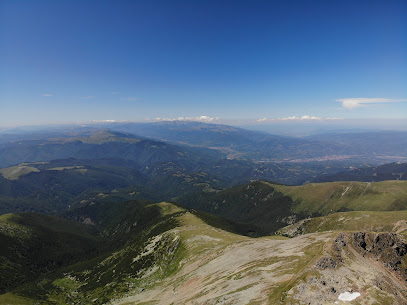
Traseul de creasta Parang
Experience the breathtaking beauty of Romania's Carpathian Mountains along the stunning Traseul de Creasta Parang hiking trail.
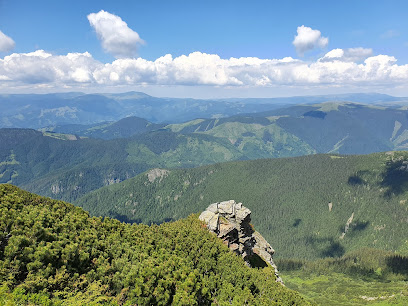
Unmissable attractions to see
Iezerul Muntinului
Explore the breathtaking beauty of Iezerul Muntinului, a serene Romanian gem perfect for nature lovers and adventure seekers alike.
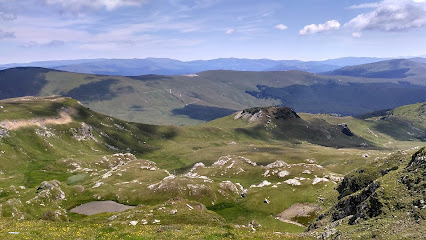
Transalpina
Discover the stunning Transalpina, Romania's highest mountain road, with breathtaking views and unforgettable adventures in nature.
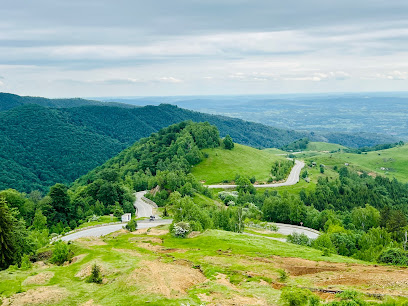
The Parângul Mic peak 2074m
Explore Parângul Mic Peak, a breathtaking hiking destination in Romania’s Carpathian Mountains, offering stunning views and diverse trails for all adventurers.
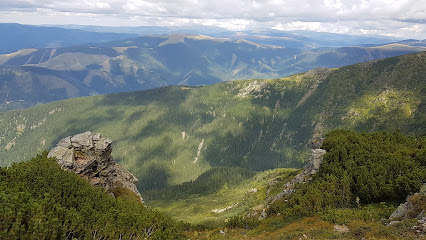
Popas
Experience the natural beauty and cultural richness of Popas, a top tourist attraction in Romania, perfect for adventurers and culture enthusiasts alike.
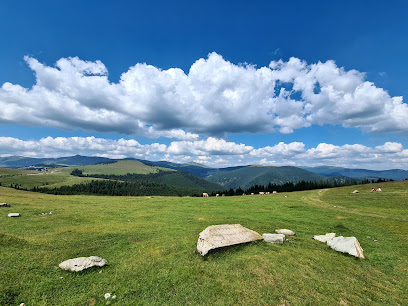
Curmătura Olteţului
Experience the breathtaking beauty of Curmătura Oltețului, a must-visit destination for nature lovers and adventure seekers in Romania.
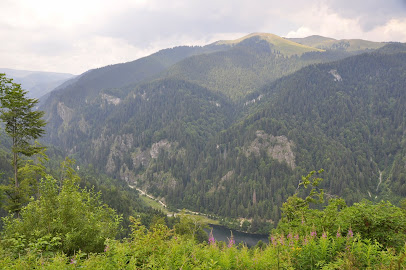
Waterfall shower Ranger
Experience the serene beauty of the Waterfall Shower Ranger in Jieț, where nature's splendor meets adventure in a breathtaking landscape.
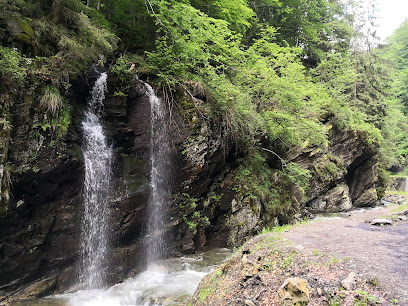
The Cârja peak 2405m
Discover the breathtaking beauty of Cârja Peak, a premier hiking destination in the Carpathian Mountains, perfect for adventurers and nature lovers alike.
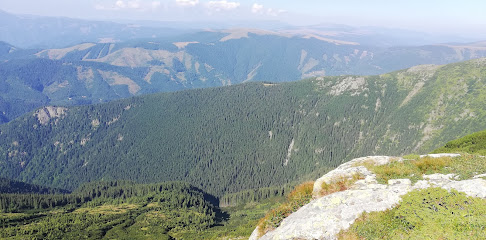
Stâncile Rafailă
Explore the breathtaking Stâncile Rafailă, a stunning nature preserve in Bumbești-Jiu, offering dramatic cliffs and rich biodiversity for all nature lovers.
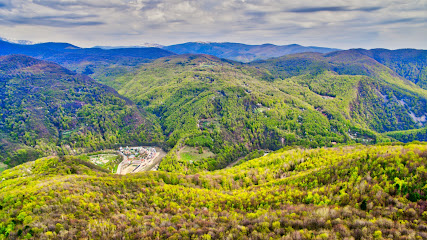
Belvedere Transalpina
Experience breathtaking views and serene landscapes at Belvedere Transalpina, a must-visit destination in Romania's Parâng Mountains.
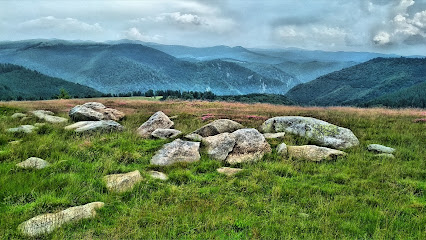
Traseul de creasta Parang
Experience breathtaking views and diverse landscapes at Traseul de creasta Parang, a premier hiking destination in Romania's beautiful Carpathian Mountains.
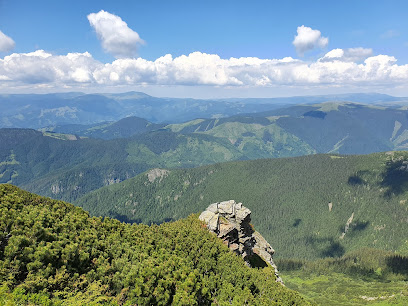
Cascada Vaidei
Explore the enchanting Cascada Vaidei, a stunning waterfall in Romania, perfect for nature lovers and adventure seekers looking for a serene escape.
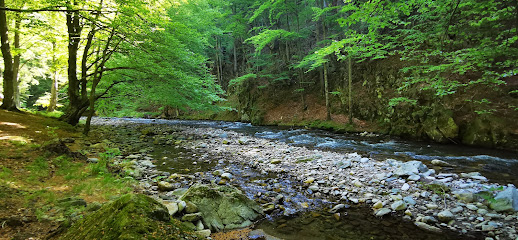
Leagan Parang
Explore Leagan Parang, a stunning Romanian tourist attraction featuring breathtaking landscapes, rich biodiversity, and peaceful hiking trails for nature enthusiasts.

The Stoeniţa peak 2421m
Experience the breathtaking beauty of Stoenița Peak, a premier hiking destination in the Carpathians, offering stunning views and unforgettable adventures.
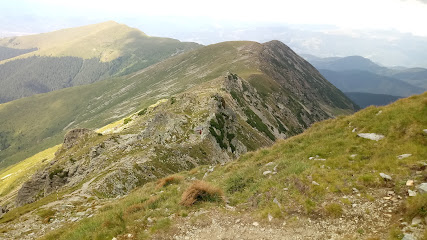
Platoul Parang - Lacul Zanoaga Stanii
Explore the breathtaking landscapes and tranquil waters of Platoul Parang - Lacul Zanoaga Stanii, a nature preserve in Romania perfect for outdoor adventures.

Viewpoint Piatra Rancii
Discover breathtaking panoramic views at Viewpoint Piatra Rancii in Rânca, a hidden gem for nature lovers and adventure seekers.
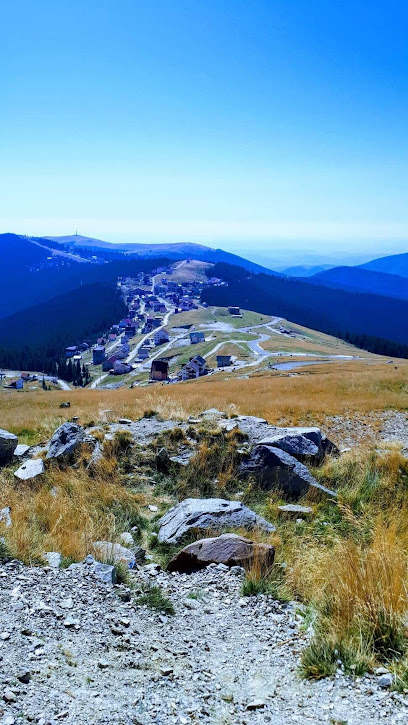
Essential places to dine
Stâna Ștefanu
Experience authentic Romanian cuisine at Stâna Ștefanu, where tradition meets breathtaking natural beauty in Voineasa.
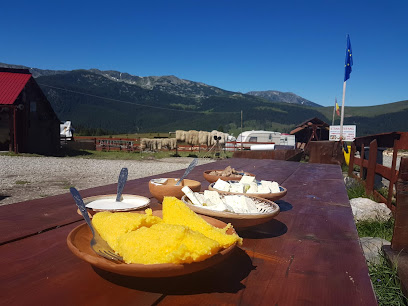
Restaurant Tara Ranca
Experience authentic Romanian cuisine amidst breathtaking mountain scenery at Restaurant Tara Ranca - your culinary haven in Rânca.
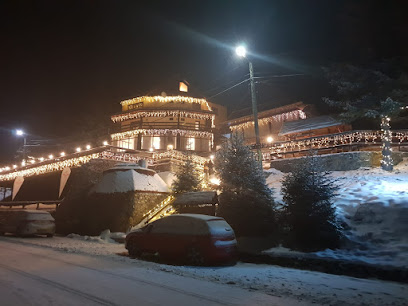
Popasul Turistic Vişina
Experience authentic Romanian cuisine in a charming setting at Popasul Turistic Vişina along E79 in Bumbești-Jiu.
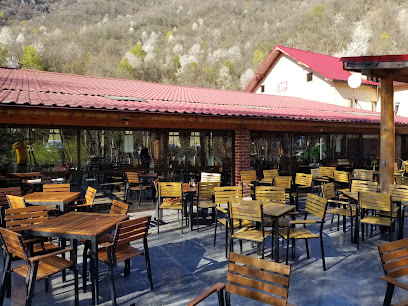
Restaurant Alessia Ranca
Experience authentic Romanian flavors amidst stunning mountain scenery at Restaurant Alessia Ranca.

Taverna Olteanului
Experience authentic Romanian cuisine amidst breathtaking mountain views at Taverna Olteanului in Rânca.

Rânca Panoramic
Experience culinary excellence at Rânca Panoramic while enjoying breathtaking mountain views in Romania's scenic landscape.
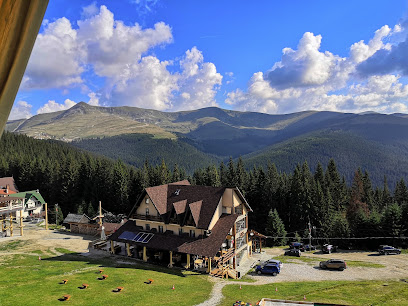
Restaurant Trilogy
Discover the flavors of Romania at Restaurant Trilogy – where every meal is a celebration of taste and tradition.
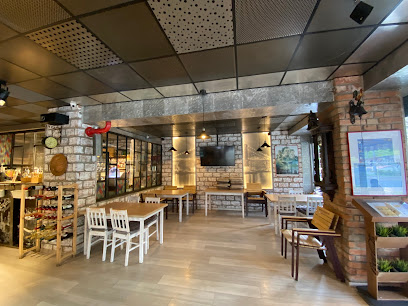
Pensiunea Ayana
Experience unparalleled comfort at Pensiunea Ayana in Petroșani - where luxury meets nature's beauty.
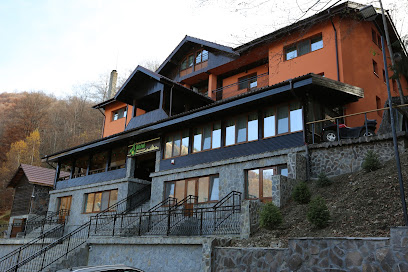
Conacul Radacinilor
Discover Conacul Radacinilor: A Perfect Blend of Hospitality, Tradition, and Nature's Beauty in Romania.
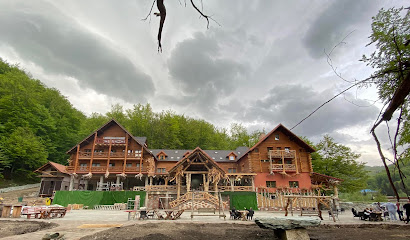
Pensiunea Cheile Olteţului
Experience rustic elegance at Pensiunea Cheile Oltețului - a perfect blend of comfort and nature in Romania's scenic landscape.
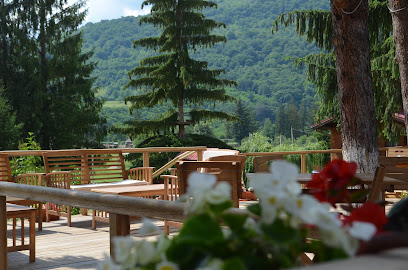
Apres Ski Curmătura
Discover Apres Ski Curmătura: A culinary gem blending delicious food with breathtaking mountain views in Romania's top ski resort.
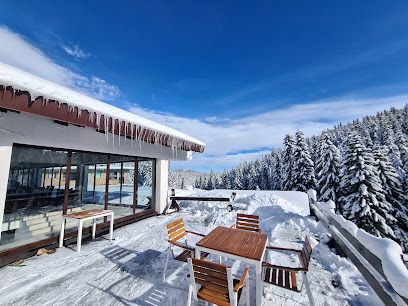
Green Paradise Restaurant
Experience authentic Romanian flavors at Green Paradise Restaurant in Vulcan - where comfort meets culinary excellence.
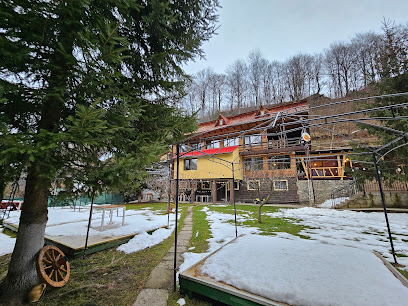
Restaurant Medieval
Dine like royalty at Restaurant Medieval in Petroșani - where history meets flavor in an enchanting atmosphere.
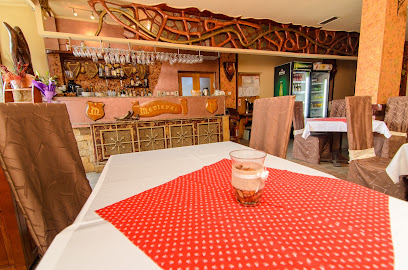
Divine Bistro
Discover the flavors of Romania at Divine Bistro - where local cuisine meets modern dining in the heart of Petroșani.
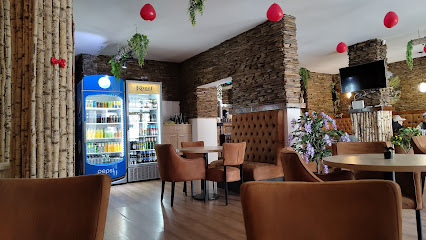
Restaurant Traditional TOBO - Pestera Muierilor
Experience authentic Romanian flavors at Restaurant Traditional TOBO near Pestera Muierilor - a culinary gem surrounded by nature's beauty.
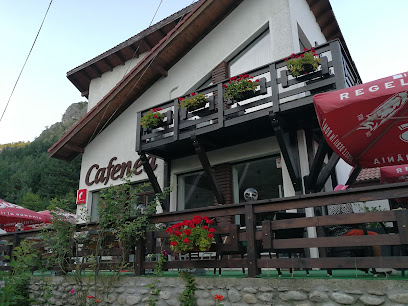
Markets, malls and hidden boutiques
Băneasa Shopping City
Discover Băneasa Shopping City, Bucharest's ultimate shopping destination with a blend of luxury boutiques, international brands, and diverse dining options.
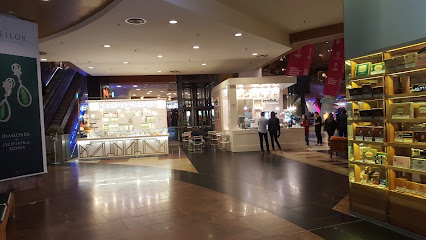
Shopping City Deva
Discover the ultimate shopping experience at Shopping City Deva, where retail, dining, and entertainment come together in a vibrant atmosphere.

Romanian Boutique
Explore Bucharest's Romanian Boutique for authentic souvenirs, handcrafted treasures, and a glimpse into Romania's rich cultural heritage.

my romanian store
Explore My Romanian Store for handmade souvenirs and crafts that showcase the rich culture and artistry of Romania.
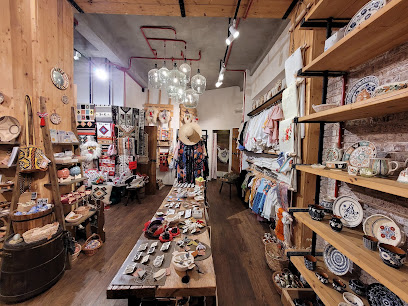
JYSK
Explore JYSK in Făgăraș for a diverse range of stylish furniture, bedding, and outdoor essentials that enhance your travel experience.
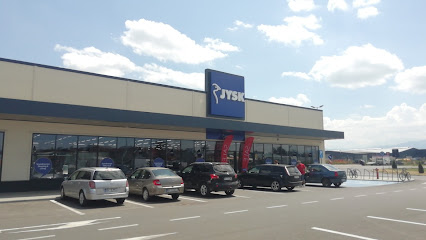
Chic Bijoux - Jewelry Shop
Discover Chic Bijoux, a premier jewelry store in Cluj-Napoca, offering exquisite pieces and exceptional service for all your gifting needs.
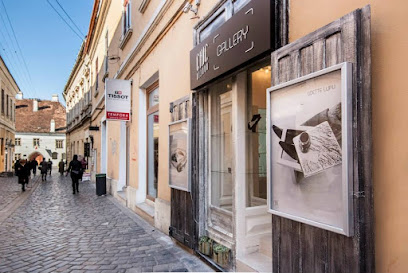
Sportisimo
Discover top-quality sporting goods and stylish clothing at Sportisimo in Făgăraș, a must-visit for all sports enthusiasts and fashion lovers.
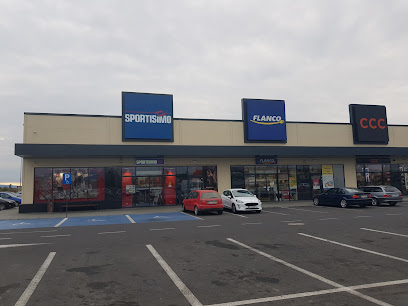
La Dolceria Boutique
Discover the sweet side of Făgăraș at La Dolceria Boutique, your go-to dessert shop for pastries, ice creams, and more.

Old Town Souvenirs
Explore Old Town Souvenirs in Bucharest for unique crafts, local gifts, and authentic Romanian memorabilia in a charming shopping atmosphere.
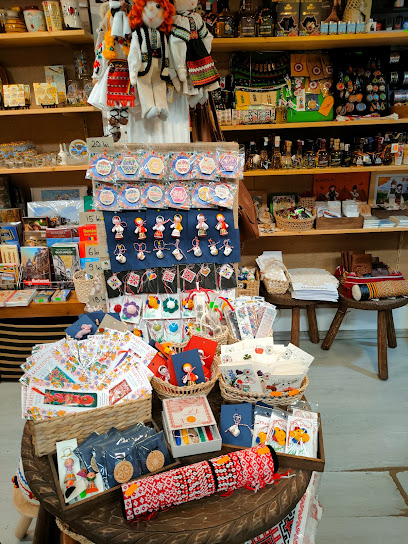
TAKKO FASHION Făgăraș
Discover stylish and affordable clothing for all ages at TAKKO Fashion in Făgăraș - your ultimate shopping destination!

Mesteshukar ButiQ [MBQ]
Discover the essence of Romanian craftsmanship at Mesteshukar ButiQ, your go-to craft store for unique gifts and fashion accessories in Bucharest.
![Mesteshukar ButiQ [MBQ]](https://evendo-location-media.s3.amazonaws.com/ShoppingImages/4ea52264-b0c1-4bb0-92c3-adf19b805127)
Merti Marimatt
Explore Merti Marimatt, a treasure trove of local craftsmanship and unique finds in the heart of Făgăraș.
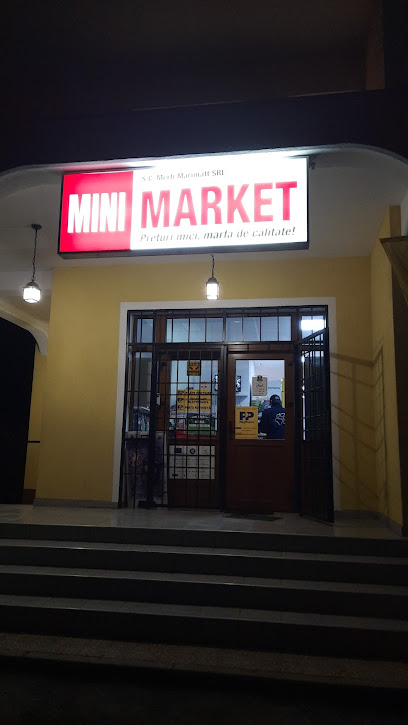
Noriel
Explore Noriel, the ultimate toy store in Făgăraș, filled with enchanting toys and games for children of all ages.
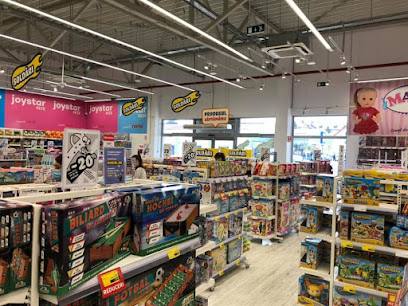
Wito's - Magazin Chinezesc
Discover authentic Chinese flavors at Wito's - Magazin Chinezesc in Făgăraș, a must-visit for food lovers seeking unique culinary experiences.
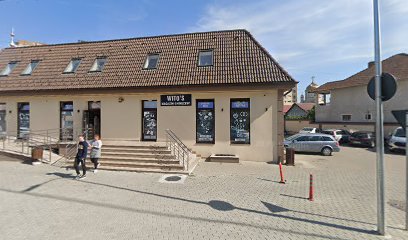
Târg suveniruri
Explore Târg Suveniruri for authentic Romanian souvenirs, handcrafted treasures, and a taste of local culture in a vibrant shopping atmosphere.
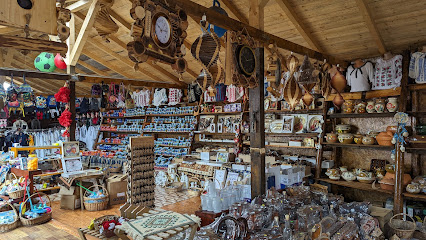
Essential bars & hidden hideouts
Barock
Experience the vibrant nightlife of Petroșani at Barock, where great drinks and a warm atmosphere await every visitor.
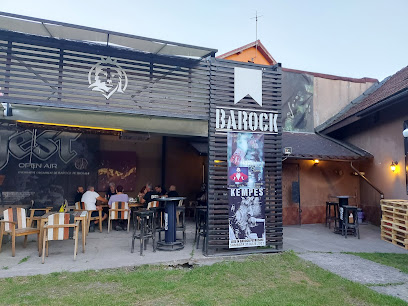
Vintage Pub
Experience the unique blend of traditional charm and modern comfort at Vintage Pub, a must-visit destination in Petroșani, Romania.
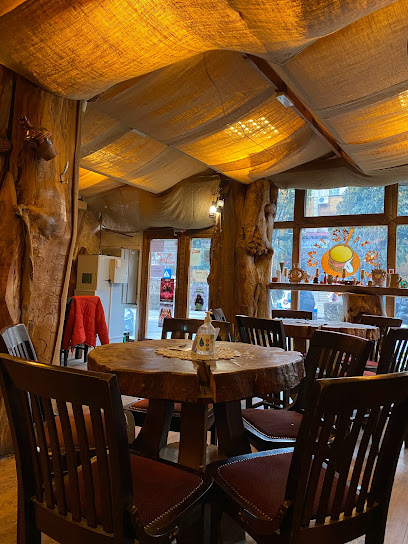
Yoyo's Irish Pub
Experience the vibrant atmosphere and warm hospitality at Yoyo's Irish Pub in Petroșani, where every visit feels like a celebration.
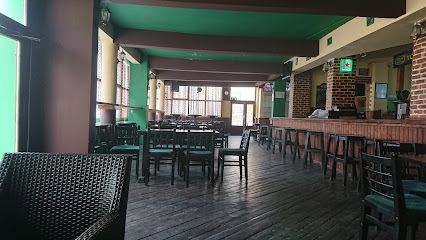
Exodus Bar
Discover vibrant nightlife, diverse drinks, and a welcoming atmosphere at Exodus Bar in Petroșani for an unforgettable evening.

Exodus Pub
Experience the local charm at Exodus Pub in Petroșani, a cozy pub offering a wide selection of drinks and a vibrant atmosphere.
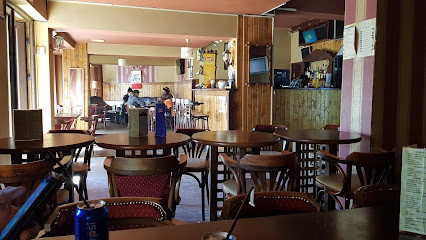
Apres Ski Parang
Experience the quintessential après-ski atmosphere at Apres Ski Parang, where relaxation meets adventure in the heart of the Carpathians.
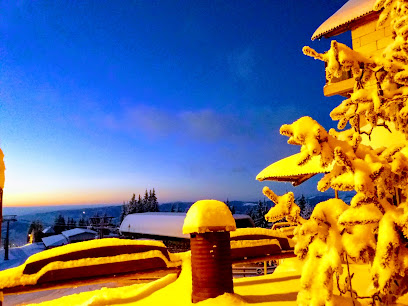
Vila Iulian
Discover Vila Iulian, a charming bar in Jieț offering a cozy atmosphere, local drinks, and a perfect spot to unwind after exploring Romania's beauty.
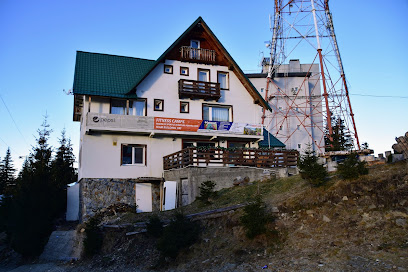
Zoom Cafe Bar
Experience the vibrant atmosphere of Zoom Cafe Bar in Petroșani, where delightful drinks meet warm hospitality in a cozy setting.
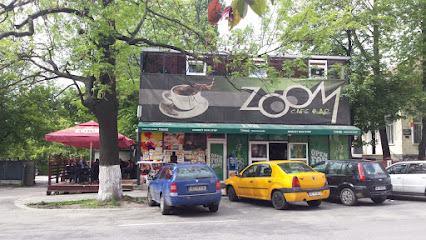
Bar Gradina De Vara Casuta Ardeleana
Experience the vibrant local culture at Bar Gradina De Vara Casuta Ardeleana in Petroșani, a perfect spot for relaxing and socializing.
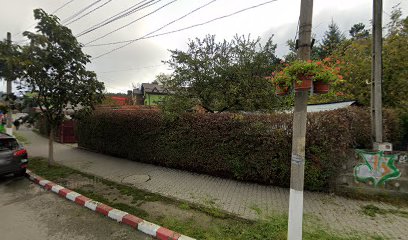
Coconea snowbar
Experience the charm of Coconea Snowbar, where winter magic meets delightful drinks and breathtaking mountain views.
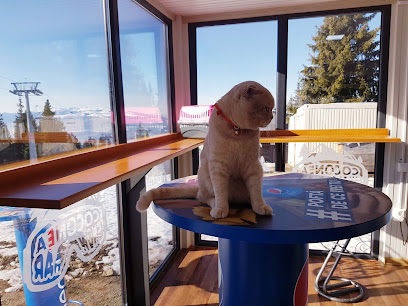
Jessy Pub
Discover the local spirit at Jessy Pub in Aninoasa, where vibrant atmosphere meets a delightful selection of drinks and friendly locals.
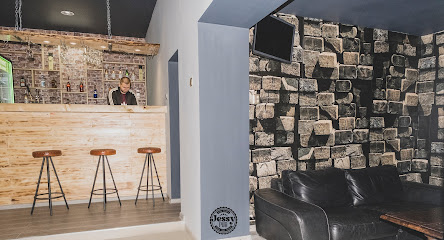
Convenience store and bar
Discover the charm of Pociovalistea at this unique convenience store and bar, where local flavors and warm hospitality await.

Terasa Pestera Muierii
Experience the beauty of Baia de Fier at Terasa Pestera Muierii, a local bar offering traditional drinks and stunning views of the surrounding landscape.
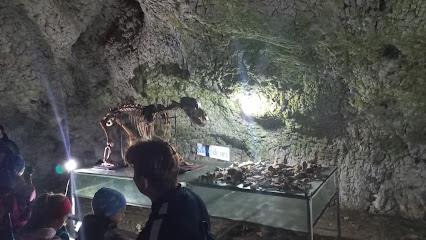
Pub M & E
Discover Pub M & E, a lively live music bar in Aninișu din Vale, where vibrant performances and a friendly atmosphere await every visitor.
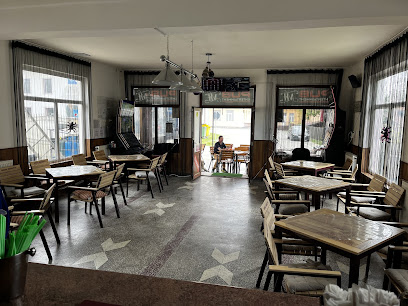
Cromatic Bar
Experience the vibrant atmosphere of Chromatic Bar in Vulcan, where delightful drinks meet local charm in an unforgettable setting.
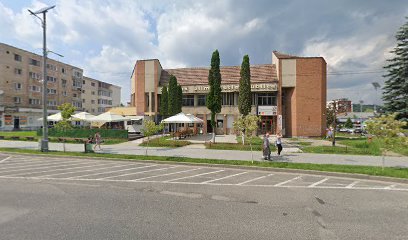
Local Phrases about Parang Mountains
-
- HelloSalut
[sah-loot] - GoodbyeLa revedere
[lah reh-veh-deh-reh] - YesDa
[dah] - NoNu
[noo] - Please/You're welcomeTe rog
[teh rohg] - Thank youMulțumesc
[mool-tsoo-mesk] - Excuse me/SorryScuzați-mă
[skoo-zah-tsi mah] - How are you?Ce mai faci?
[cheh my fahch?] - Fine. And you?Bine. Și tu?
[bee-neh. shee too?] - Do you speak English?Vorbiți engleză?
[vor-beets eng-leh-za?] - I don't understandNu înțeleg
[noo in-tseh-lehg]
- HelloSalut
-
- I'd like to see the menu, pleaseAș dori să văd meniul, vă rog
[ush doh-ree suh vad meh-nyool, vuh rohg] - I don't eat meatNu mănânc carne
[noo muh-nuhnk kahr-neh] - Cheers!Noroc!
[noh-rohk] - I would like to pay, pleaseAș dori să plătesc, vă rog
[ush doh-ree suh pluh-tesk, vuh rohg]
- I'd like to see the menu, pleaseAș dori să văd meniul, vă rog
-
- Help!Ajutor!
[ah-yoo-tor] - Go away!Du-te!
[doo-teh] - Call the Police!Sunați poliția!
[soo-nahts poh-lee-tsee-ah] - Call a doctor!Sunați un doctor!
[soo-nahts oon dohk-tohr] - I'm lostM-am pierdut
[mahm pee-ehr-dooot] - I'm illSunt bolnav
[soont bohl-nav]
- Help!Ajutor!
-
- I'd like to buy...Aș dori să cumpăr...
[ush doh-ree suh koom-par] - I'm just lookingDoar mă uit
[doh-ar muh oow-eet] - How much is it?Cât costă?
[kaht kohs-tuh?] - That's too expensiveEste prea scump
[ehs-teh prah skoomp] - Can you lower the price?Puteți reduce prețul?
[poo-tehts reh-doo-che preh-tsool?]
- I'd like to buy...Aș dori să cumpăr...
-
- What time is it?Cât este ora?
[kaht yeh-steh oh-rah] - It's one o'clockEste ora unu
[ehs-teh oh-rah oon-oo] - Half past (10)Zece și jumătate
[zeh-cheh shee zhoo-muh-tah-teh] - MorningDimineața
[dee-mee-neh-tsa] - AfternoonDupă-amiază
[doo-puh ah-mee-ah-zuh] - EveningSeara
[seh-ah-rah] - YesterdayIeri
[yehr] - TodayAstăzi
[ah-stuhz] - TomorrowMâine
[muh-yeh-neh] - 1Unu
[oo-noo] - 2Doi
[doy] - 3Trei
[treh-ee] - 4Patru
[paht-roo] - 5Cinci
[cheen-chee] - 6Șase
[shah-seh] - 7Șapte
[shahp-teh] - 8Opt
[opt] - 9Nouă
[noo-uh] - 10Zece
[zeh-cheh]
- What time is it?Cât este ora?
-
- Where's a/the...?Unde este unul/o...
[oon-deh yeh-steh oon-ool/oh] - What's the address?Care este adresa?
[ka-reh yeh-steh ah-dreh-sah] - Can you show me (on the map)?Puteți să-mi arătați (pe hartă)?
[poo-tehts suh-mee ah-rah-tahts (peh hahr-tuh)?] - When's the next (bus)?Când este următorul (autobuz)?
[ka-nd yeh-steh oor-muh-toh-rool (ow-toh-boo-z)] - A ticket (to ....)Un bilet (spre ....)
[oon bee-let (spreh)]
- Where's a/the...?Unde este unul/o...
History of Parang Mountains
-
The Parang Mountains were once home to the ancient Thracian tribes, who inhabited this region long before the advent of Roman rule. These early settlers left behind a legacy of fortresses and artifacts that provide a glimpse into their advanced society and spiritual practices.
-
During the Roman conquest of Dacia in the early 2nd century AD, the Parang Mountains served as a strategic location for both the Romans and the native Dacians. The construction of Roman roads and fortifications in the region allowed for better control and integration of this mountainous area into the Roman Empire.
-
In the medieval period, the Parang Mountains were dotted with fortresses built by local rulers to defend against invasions. These fortresses, such as the one at Orăștie, played crucial roles in the defense strategies of the region against Ottoman incursions and other threats.
-
The Parang Mountains have long been an important center for shepherding and pastoral life. The traditional practices of transhumance, where shepherds move their flocks between mountain and lowland pastures, have shaped the cultural and economic landscape of the region for centuries.
-
During the communist era in Romania, the Parang Mountains were subjected to extensive resource exploitation, including logging and mining. The construction of roads and industrial facilities during this period left a lasting impact on both the environment and the local communities.
-
In recent decades, the Parang Mountains have become a popular destination for eco-tourism, attracting visitors with their pristine landscapes and rich biodiversity. Efforts to preserve the natural environment and traditional ways of life have led to the establishment of protected areas and sustainable tourism initiatives.
Parang Mountains Essentials
-
Parang Mountains are located in the Southern Carpathians of Romania. The nearest major city is Sibiu, which has an international airport (Sibiu International Airport) offering flights from various European cities. From Sibiu, you can rent a car or take a bus to reach the Parang Mountains. Alternatively, you can also fly into Bucharest and take a train or bus to Petroșani, the nearest town to the Parang Mountains, and then use local transportation to reach your destination.
-
Within the Parang Mountains, the most convenient way to get around is by car, as public transport options can be limited. Local buses and minibuses (maxi-taxis) are available but may not cover all areas extensively. Taxis are another option for shorter trips. For those looking to explore the mountains more intimately, hiking and biking trails are well-marked and offer breathtaking views.
-
The official currency in Romania is the Romanian Leu (RON). Credit and debit cards are widely accepted in larger towns and tourist areas. However, it is advisable to carry cash, especially if you plan to visit more remote or rural areas. ATMs are available in towns like Petroșani, but it is wise to withdraw sufficient cash before heading into the mountains.
-
The Parang Mountains are generally safe for tourists, but standard safety precautions should be taken. Avoid hiking alone, especially in remote areas, and always inform someone of your plans. Petty theft can occur, so keep an eye on your belongings. There are no specific high-crime areas targeting tourists, but it is always best to stay vigilant.
-
In case of an emergency, dial 112 for immediate assistance. The local authorities and medical services are reliable. Petroșani has medical facilities, and for more serious issues, you may need to go to a larger hospital in Sibiu or Bucharest. It is highly recommended to have travel insurance that covers medical emergencies and evacuation.
-
Fashion: Do wear comfortable and weather-appropriate clothing, especially if you plan to hike. Layers are advisable due to changing mountain weather. Avoid overly casual attire in religious sites. Religion: Do respect local customs and traditions. When visiting churches or monasteries, dress modestly and cover your head if required. Public Transport: Do be respectful and offer your seat to elderly passengers. Don’t eat or drink on public transport. Greetings: Do greet people with a handshake. A slight bow of the head is also a sign of respect. Eating & Drinking: Do try local specialties and accept food offerings graciously. Don’t refuse hospitality, as it is considered impolite.
-
To experience the Parang Mountains like a local, visit small villages and interact with residents who are often friendly and willing to share stories about their culture and traditions. Try local dishes such as 'bulz' (polenta with cheese) and 'ciorbă de burtă' (tripe soup). For a unique experience, participate in local festivals or events. Explore lesser-known trails for a more secluded and authentic adventure.
Trending Landmarks in Parang Mountains
Nearby Cities to Parang Mountains
-
Things To Do in Râmnicu Vâlcea
-
Things To Do in Deva
-
Things To Do in Drobeta-Turnu Severin
-
Things To Do in Craiova
-
Things To Do in Pitesti
-
Things To Do in Sighisoara
-
Things To Do in Cluj-Napoca
-
Things To Do in Brasov
-
Things To Do in Arad
-
Things To Do in Smederevo
-
Things To Do in Bucharest
-
Things To Do in Pleven
-
Things To Do in Pančevo
-
Things To Do in Belgrade
-
Things To Do in Ruse









